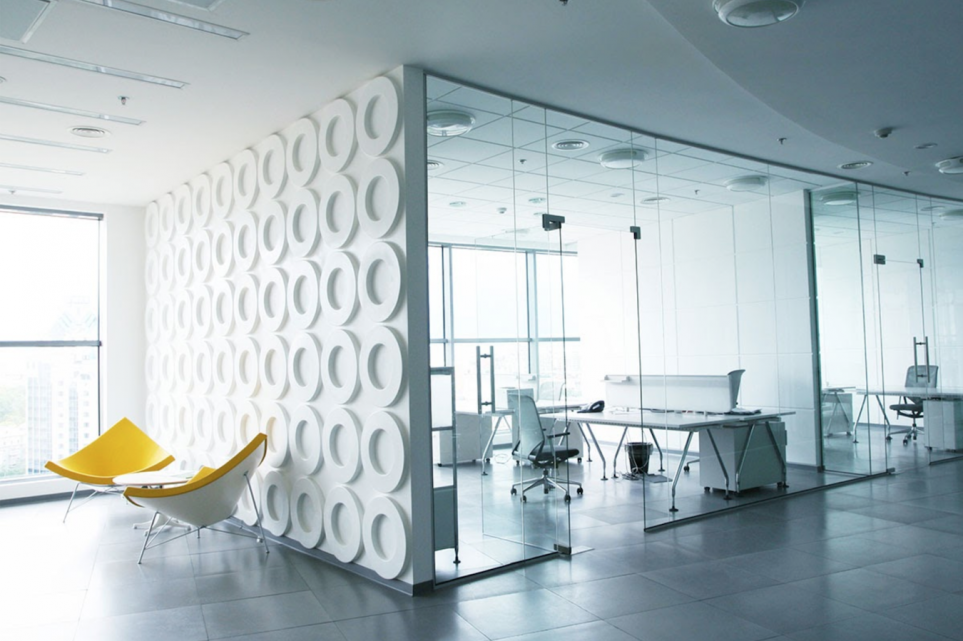The workplace has evolved from being a simple functional area into a dynamic environment that reflects company culture, values, and aspirations. In today’s fast-paced business world, design plays a vital role in shaping employee productivity, creativity, and well-being. A well-planned office interior goes beyond aesthetics—it influences collaboration, motivation, and even business success.
Understanding Corporate Office Interior Design
Corporate office interior design is the thoughtful arrangement of space, furniture, and aesthetics to create work environments that foster efficiency and comfort. It’s about designing layouts that not only look appealing but also serve practical needs, enabling employees to perform at their best while feeling connected to their workspace. Unlike residential or hospitality design, office interiors must balance functionality with innovation to support different styles of work.
The Importance of Office Design in Modern Work Culture
Boosting Productivity
An intelligently designed office can directly improve efficiency. From ergonomic furniture to smart layouts that reduce distractions, every design choice can enhance focus and output.
Reflecting Brand Identity
The design of a corporate office often communicates the brand’s personality. Whether through color schemes, artwork, or open layouts, offices serve as physical embodiments of the values an organization wishes to project.
Supporting Collaboration and Flexibility
Today’s businesses thrive on collaboration. Offices designed with open spaces, breakout areas, and meeting pods encourage teamwork while maintaining options for private focus work.
Enhancing Employee Well-being
Natural light, greenery, comfortable seating, and air quality contribute to employee satisfaction and health. A healthy workplace is often a more productive one.
Key Elements of Effective Corporate Office Design
Layout and Space Planning
Efficient use of space ensures smooth traffic flow, accessibility, and zoning. Whether it’s an open-plan office or a hybrid model, layouts must support both collaboration and concentration.
Ergonomics
From chairs and desks to monitor placement, ergonomic solutions reduce strain and fatigue, helping employees maintain better posture and comfort throughout the day.
Lighting Design
Good lighting is essential. Natural light is ideal, but layered artificial lighting ensures consistent brightness, reduces eye strain, and creates a pleasant atmosphere.
Color Psychology
Colors influence emotions and productivity. For example, blues and greens promote calmness and focus, while vibrant shades can inspire creativity and energy.
Technology Integration
Modern office design incorporates technology seamlessly—smartboards, video conferencing tools, and automated lighting systems improve efficiency and adaptability.
Acoustic Control
Noise is one of the biggest distractions in offices. Soundproofing, acoustic panels, and thoughtful layouts minimize disruptions and ensure a balanced environment.
Trends Shaping Corporate Office Interiors
Hybrid Workspaces
With remote work becoming common, offices are being redesigned to accommodate flexible schedules. Hot-desking, shared workstations, and multi-functional areas are gaining popularity.
Biophilic Design
Bringing nature indoors through plants, natural textures, and daylight enhances creativity and reduces stress, making biophilic design a leading trend.
Sustainable Materials
Eco-friendly materials such as recycled wood, bamboo, and low-VOC paints align office design with global sustainability goals while creating healthier environments.
Wellness-Centered Design
Dedicated spaces for relaxation, meditation, or even fitness within offices highlight the growing importance of mental and physical well-being.
Smart Technology
Offices now embrace automation, from motion-sensor lighting to climate control systems, ensuring energy efficiency and convenience.
Challenges in Corporate Office Design
- Balancing Privacy and Openness: Open layouts encourage collaboration but may compromise privacy. Designers must strike the right balance.
- Maximizing Limited Space: Especially in urban areas, office spaces are compact. Intelligent design is crucial to make every square foot useful.
- Adapting to Change: Businesses grow and evolve. Flexible designs that accommodate expansion or reconfiguration help avoid frequent overhauls.
- Managing Costs: Striving for high-quality finishes and innovative solutions within budget constraints is often a design challenge.
Case Examples of Effective Design Approaches
- Creative Start-ups: Often prefer open-plan layouts with vibrant colors, casual lounges, and collaborative zones that spark innovation.
- Corporate Headquarters: Typically feature elegant designs with formal meeting rooms, executive suites, and technology-driven spaces that highlight professionalism.
- Hybrid Work Models: Offices catering to remote and in-person staff focus on modular furniture and adaptable layouts.
The Future of Office Interiors
As work culture continues to evolve, office design will increasingly prioritize flexibility, sustainability, and technology. Future offices may feature more immersive virtual meeting spaces, AI-driven energy management systems, and furniture that adapts to the needs of individuals. The central idea will remain the same: creating environments that empower people and foster creativity while reflecting organizational values.
Conclusion
Corporate office interior design is more than just arranging desks and chairs—it’s about creating purposeful spaces that balance efficiency, comfort, and innovation. By integrating thoughtful layouts, sustainable practices, and people-centric features, offices transform into environments where both businesses and employees thrive. In Singapore and around the world, corporate interiors continue to evolve as reflections of modern work culture, proving that design is as much about people as it is about spaces.


